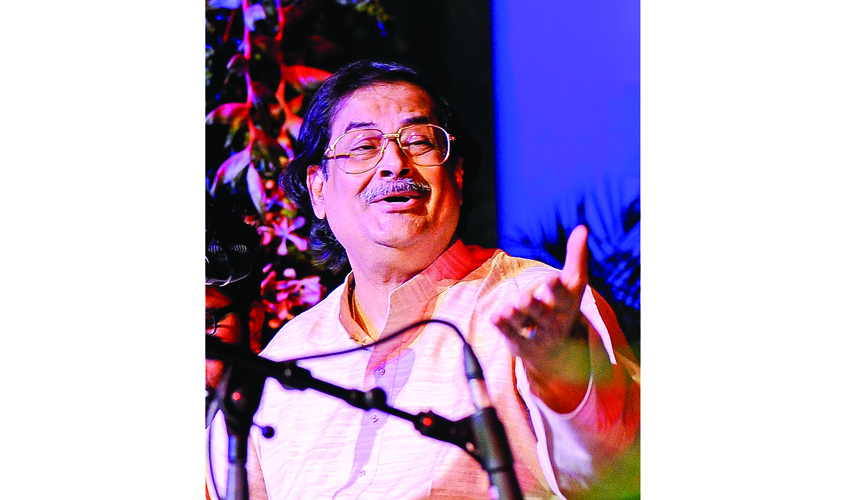The four-day programme, which started on 30 March, showcased performances by Girjia Devi, followed by vocals by Ajoy Chakraborty. Other participating artistes were Manjiri Asanare (vocal), Pandit Shiv Kumar Sharma (instrumental, on santoor), Biswajit Roy Chowdhury (instrumental, on sarod), Rashid Khan (vocal), Purbayan Chatterjee (instrumental, on sitar). The grand finale is slated for 2 April by none other than Pandit Jasraj.
Founded in 1952, the Shriram Bhartiya Kala Kendra (SBKK) seeks to embrace all Indian classical performing arts, mythological, contemporary and folk productions of epics. Under its umbrella, Shriram Shankarlal Music festival — the oldest music festival in the country carries forward a rich cultural tradition that has continuously drawn from the skills of not only the country’s illustrious maestros but also promising the young that would carry this legacy making it popular each year. Known for its rich musical legacy, it also houses the largest archive of live recordings of maestros and several other luminaries.
As the festival was hosted in open air in the lawns of SBKK after many years, noted singer, Padmabhushan Girija Devi who represents the finest tradition of the Benaras gharana and equally adept in singing Khayal and the semi-classical forms like thumri, chaiti, tappa, kajri etc. welcomed the audience with her soothing performance. The thumri singer while performing also explained the audience about the various ragas and trends in folk songs and how thumri is also an amalgamation of Sufiyana music.
The folk singer known as “Queen of Thumri” who generally avoids speaking before her concert gave a short insight on the Indian classical genre — thumri. “Thumri is a collective form of lyrics which convey the various forms of love such as love of god, love for your beloved, and simple maternal love. It is a combination of many ragas and embellishment of swaras. It is about longing, emotions and you speak your heart out through music. I have always seen it very differently. It is very beautiful, like if you say, “Jao wahi tum Shyam, jaha sari rain tumne gawayi hain” a heart rending rendition which means that the girl doesn’t want her beloved to go though she is portraying to send him away,” Girija Devi said to Guardian 20.
After the captivating performance by Girija Devi, Ajoy Chakraborty who is a scion and doyen of the Patiala-Kasur Gharana, presented a performance which left the audience spell-bound.

Chakraborty who primarily represents Ustad Bade Ghulam Ali Khan Sahib’s gayaki, and equally portray even the most subtle features of other major classical gharanas of India like Indore, Delhi, Jaipur, Gwalior, Agra, Kirana, Rampur and Carnatic music of South India; has performed in innumerable concerts all over India and abroad and has more than 100 albums to his credit.
He thinks that every generation imparts something of its own to the music. “Every generation teaches something to the next generation. Everyone says that due to technology, singing has started deteriorating. But do you think there are enough spaces in the cities for me to set up my musical center to teach young musicians? I have my music academy called ‘Shrutinandan’ located in Kolkata but now I have AjayChakraborty.com where I have students from places like Australia, US and England whom I am able to impart music because of this technology. I will never criticise anyone. I will never say that Bollywood or for that matter Hollywood music is doing something wrong, but I firmly believe that what Indian classical music can teach you, no other music can do it better.
And if you practice continuously for 10 years all 365 days between 14-15 hours per day, you will get thousands of performances after that because this is the industry where you won’t be successful unless you work hard. And in my school, I take students only between 5-11 years because I feel I don’t have to impart only knowledge to them, I also have to impart humanity. That is the time you can mould a child. I feel music is not just to enjoy our aesthetics and heritage, it also teaches us humanity,” said Chakraborty.
During the musical occasion, Shobha Deepak Singh, Festival Director & Vice Chairperson, SBKK said, “This is the 70th edition of the festival and, after many years, we are hosting it in open air in the lawns of SBKK. In its nascent years, it was only the senior artists who were part of the festival, but now, we make special effort to include younger talent as well. Contrary to popular belief that classical music is losing its audience base, the success of the festival year after year proves that there is not only a discerning audience for classical music but also that classical music retains its unique position in the Indian arts.”
The event was not only about the legendary musicians but it also showed photography work of Shobha Deepak Singh who showcased forty-four pictures of world-renowned maestros who had performed in SBKK premises.

